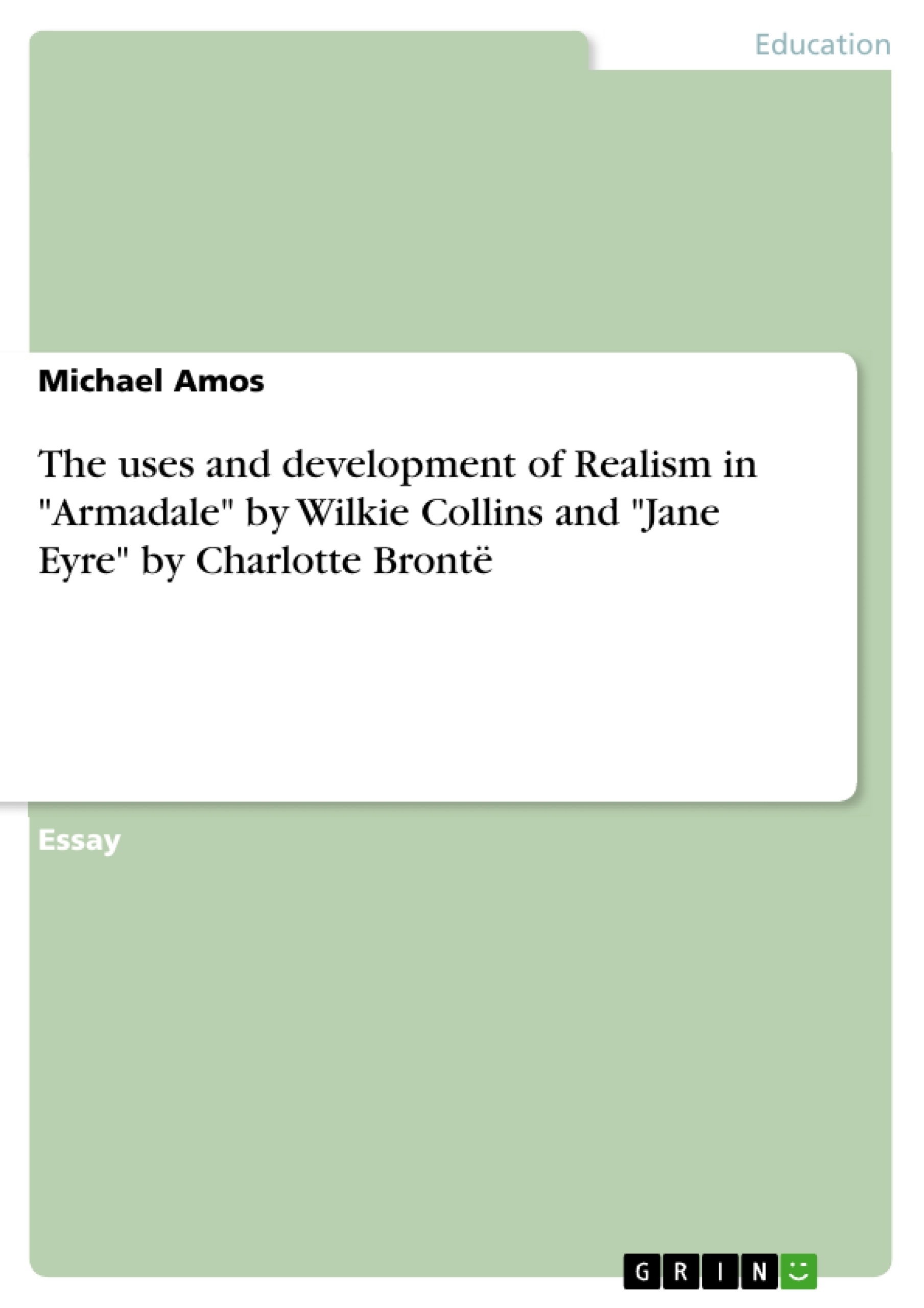While Realism is concerned primarily with representing the world objectively and truthfully, I will examine how Armadale by Wilkie Collins and Jane Eyre by Charlotte Brontë, use and develop the genre further by establishing representation as subjective to the perspective of the writer, and therefore dependent upon his inner reality. I will firstly clarify Realism as a genre limited to representation, and how this in turn is fuelled by the characters’ illusory self-consciousness. Focusing on Miss Gwilt and her interpretation of the dreams and shadows, this essay will argue towards her identity crisis and her fall in power. Similarly, by analysing Jane Eyre’s and Mr. Rochester’s relationship, this essay will discuss the ways in which each character is continually striving to dive into the depths of the other’s eyes, while simultaneously keeping their own inner-self hidden from the outsider’s gaze. When concealment fails, and the inner is open to manipulation, the narrative is placed away from them, and their power over their own destiny is reflective of the power we give away to the subjectivity of the perceived world.
Inhaltsverzeichnis (Table of Contents)
- Realism as Representation
- The Subjective Nature of Realism
- Realism and the Inner Life
- Armadale: Subverting the Genre
- Jane Eyre: The Illusion of Reality
- The Importance of Community
- The Invisible World of Psychology
Zielsetzung und Themenschwerpunkte (Objectives and Key Themes)
This essay explores the use and development of Realism in Wilkie Collins' Armadale and Charlotte Brontë's Jane Eyre. It argues that while Realism aims for objective representation, these novels demonstrate that representation is inherently subjective, shaped by the writer's perspective and the characters' inner realities.
- The subjective nature of representation in Realism
- The significance of inner life and psychology in Victorian literature
- The interplay between inner and outer realities in shaping characters' experiences
- The use of narrative techniques to create a sense of subjectivity and blurring of boundaries between reader and writer
- The role of community and relationships in shaping individual destinies
Zusammenfassung der Kapitel (Chapter Summaries)
The essay begins by defining Realism as a genre focused on representing the world objectively. It then explores how Armadale and Jane Eyre challenge this definition by emphasizing the subjective nature of representation, highlighting the influence of the writer's perspective and the characters' inner lives.
The essay examines Miss Gwilt's identity crisis in Armadale, arguing that her perception of dreams and shadows reflects her struggle for power. Similarly, it analyzes the relationship between Jane Eyre and Mr. Rochester in Jane Eyre, demonstrating how both characters attempt to understand each other's inner worlds while concealing their own.
The essay further explores how these novels utilize narrative techniques, such as letters and communication, to create a sense of subjectivity and blur the boundaries between reader and writer. It argues that Realism is not about how the world is, but how it can be seen, revealing the author's perspective and the complexities of the Victorian mind.
The essay concludes by discussing the importance of community and the interplay between inner and outer realities. It highlights how the characters' relationships and experiences in both novels reflect the broader societal context of the Victorian era, particularly the growing interest in psychology and the unconscious.
Schlüsselwörter (Keywords)
This essay focuses on the key themes of Realism, subjectivity, representation, inner life, psychology, community, and relationships as they are explored in the novels Armadale and Jane Eyre. It examines how these works challenge traditional notions of Realism by emphasizing the subjective nature of perception and the influence of inner realities on individual experiences.
- Quote paper
- Michael Amos (Author), 2015, The uses and development of Realism in "Armadale" by Wilkie Collins and "Jane Eyre" by Charlotte Brontë, Munich, GRIN Verlag, https://www.grin.com/document/374180



